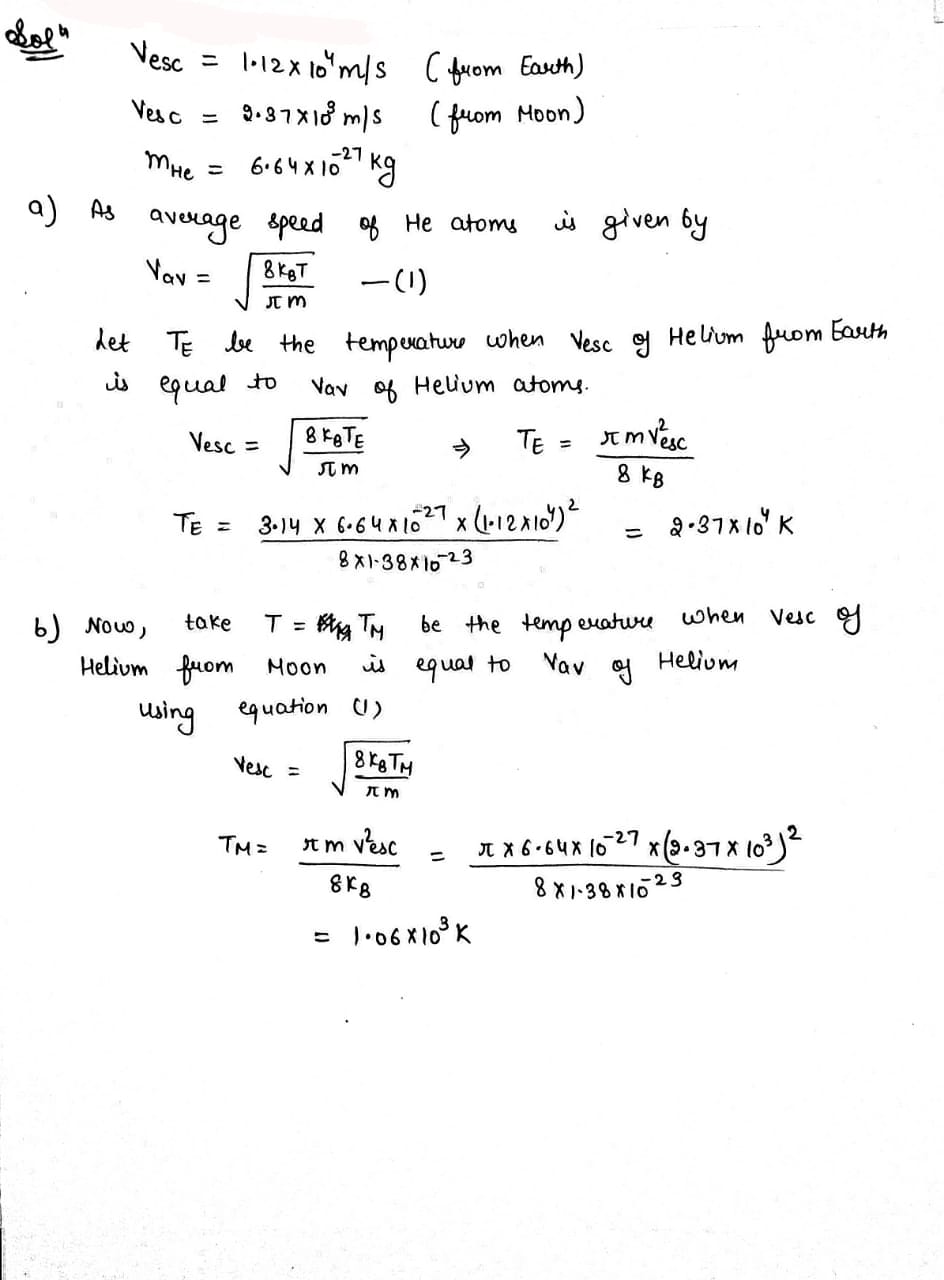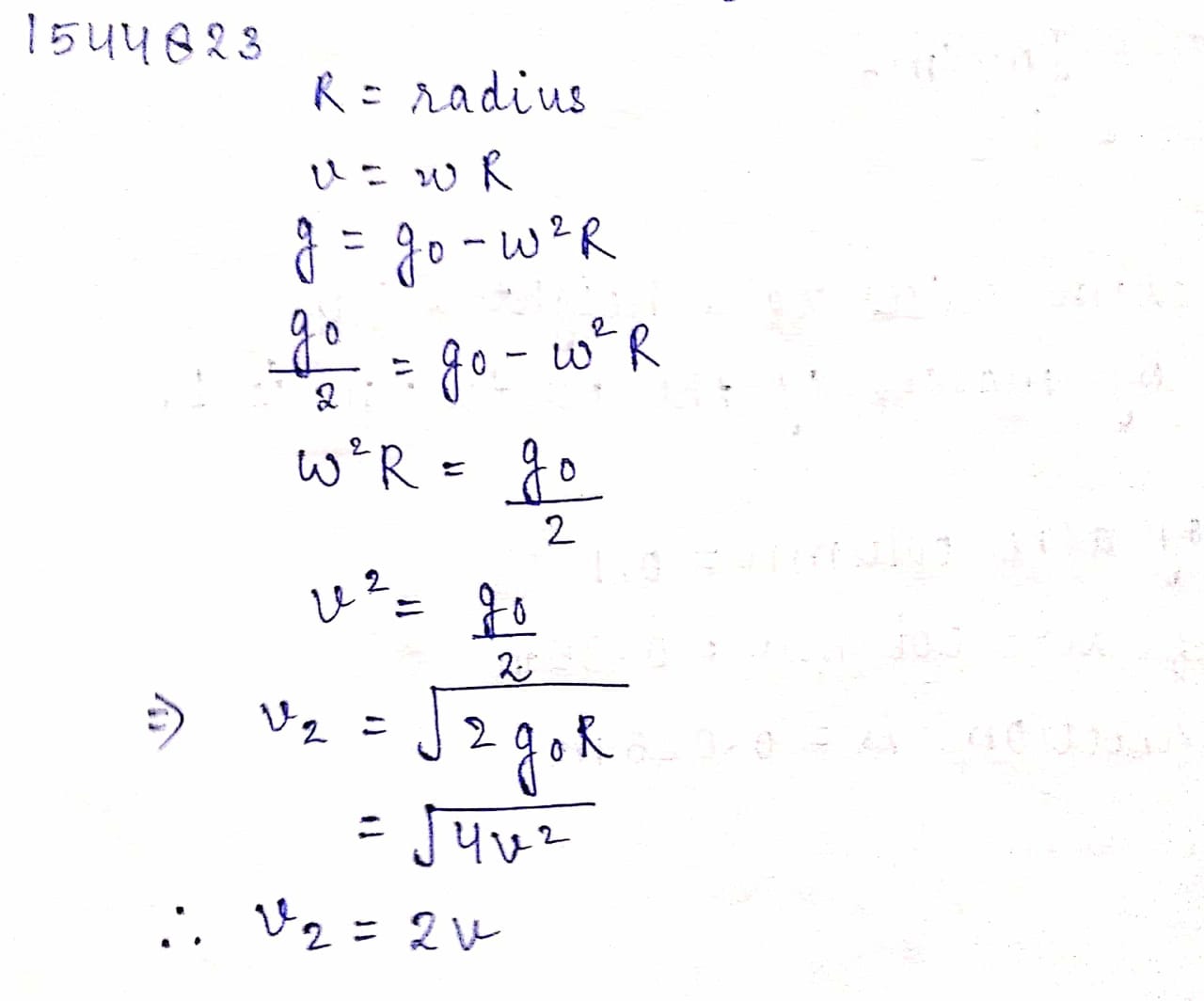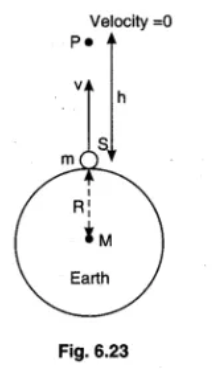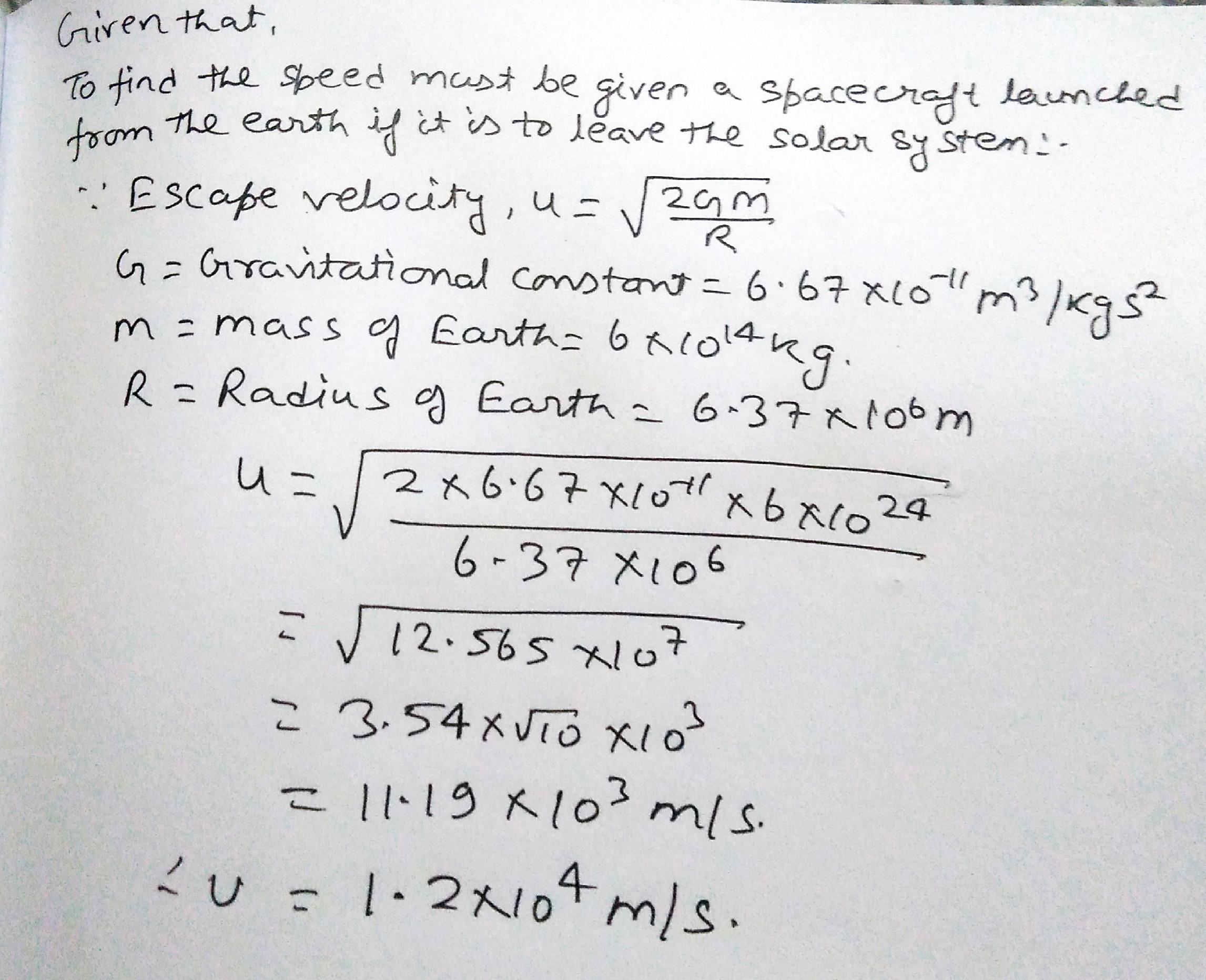Gravitation - Class 11 Medical Physics - Extra Questions
Review. At what temperature would the average speed of helium atoms equal (a) the escape speed from the Earth, $$1.12 \times 10^4 m/s$$, and (b) the escape speed from the Moon, $$2.37 \times 10^3 m/s?$$ Note: The mass of a helium atom is $$6.64 \times 10^{-27} kg$$.
What are the factors that decide the value of escape velocity?
What is meant by escape velocity? Write the relation between escape velocity and orbital velocity.
What is escape velocity? Obtain an expression for it
Define escape velocity. Mentions its expression.
The escape velocity of a projectile on the earth's surface is $$11.2km{s}^{-1}$$. A body is projected out with thrice this speed. What will be the speed of the body far away from the earth, that is, at infinity? Ignore the presence of sun and other planets
A spherical uniform planet is rotating about its axis. The velocity of a point on its equator is V. Due to the rotation of planet about its axis the acceleration due to gravity g at equator is 1/2 of g at poles. The escape velocity of a particle on the pole of planet in terms of V.
Small, glassy button like objects called tektites are found strewn over areas in various locations over the earth. One view of the origin of tektites is that they were ejected from the moon by the impact of meteorites on the lunar surface. At what minimum speed must a body be ejected from the lunar surface if it is to reach the earth ?
Hint : A minimum speed tektite must have negligible speed when it passes through a certain point on its moon-earth trajectory.
Derive formula for velocity of projection.
If an object has just enough energy to escape from the earth, it will not escape from the solar system because of the attraction of the sun. Use equation for escape velocity $$\upsilon_e = \sqrt {2GM_E / R_E}$$ with $$M_S$$ replacing $$M_E$$ and the distance to the sun $$r_S$$ replacing $$R_E$$ to calculate the speed $$\upsilon_{eS}$$ needed to escape from the sun's gravitational field for an object at the surface of the earth. Neglect the attraction of the earth. Show that if $$\upsilon_e$$ is the speed needed to escape from the earth, neglecting the sun, then the speed of an object at the earth's surface needed to escape from the solar system is given by $$\upsilon_{e, solar}^2 = \upsilon_e^2 + \upsilon_{eS}^2 ,$$ and calculate $$\upsilon _{e,solar}.$$
At what altitude above Earth's surface would the gravitational acceleration be $$ 4.9 m/s^{2} $$
The values of g at six distances A, B, C, D, E and F from the surface of the earth are found to be $$3.08 m/s^2, 9.2.3 m/s^2, 0.57 m/s^2, 7.34 m/s^2, 0.30 m/s^2$$ and $$1.49 m/s^2$$, respectively.
(a) n Arrange these values of g according to the increasing distances from the surface of the earth (keeping the value of g nearest to the surface of the earth first)
(b) If the value of distance F be 10000 km from the surface of the earth, state whether this distance is deep. inside the earth or high up in the sky. Give reason for your answer.
State and explain Kepler's laws of planetary motion. Draw diagrams to illustrate these laws.
A ball is thrown vertically upwards with an initial velocity of 49 m/s. Calculate:
the maximum height attained,(Take g = $$9.8 m / s^{2}$$)
A body falls from the top of a building and reaches the ground 2.5s later. How high is the building? (Take g = $$9.8 m / s^{2}$$)
The potential energy of $$3\,kg$$ body is $$ -54\,J$$. Calculate its escape velocity.
Does the escape speed of a body from the earth depend on ?
The height of the locations from where the body is lunched
The change in the value of 'g' at a height 'h' and depth 'd' is same . Assuming h and d are both very small compared to radius of Earth . Find ratio of h with respect to d.
What speed must be given a spacecraft launched from the earth if it is to leave the solar system ?
Hint : The spacecraft is launched from a moving platform.
Class 11 Medical Physics Extra Questions
- Gravitation Extra Questions
- Kinetic Theory Extra Questions
- Laws Of Motion Extra Questions
- Mechanical Properties Of Fluids Extra Questions
- Mechanical Properties Of Solids Extra Questions
- Motion In A Plane Extra Questions
- Motion In A Straight Line Extra Questions
- Oscillations Extra Questions
- Systems Of Particles And Rotational Motion Extra Questions
- Thermal Properties Of Matter Extra Questions
- Units And Measurement Extra Questions
- Waves Extra Questions
- Work, Energy And Power Extra Questions




